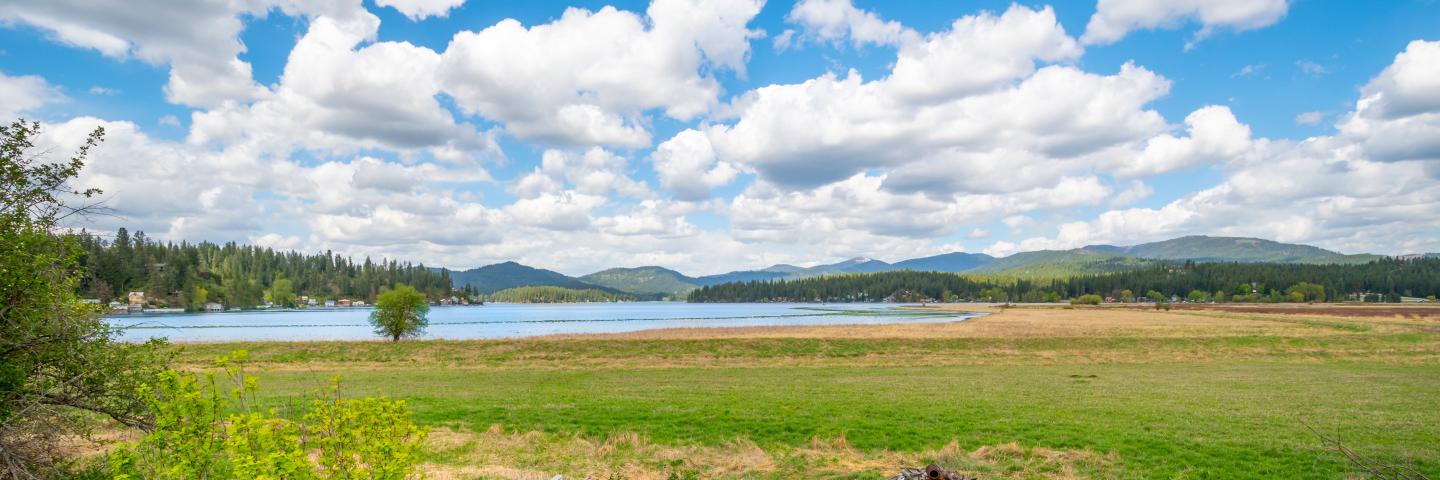Notice


Wetlands Reserve Easements (WRE) help private and tribal landowners protect, restore and enhance wetlands which have been previously degraded due to agricultural uses.
NRCS is streamlining its Agricultural Conservation Easement Program to improve the program for landowners and partners. Learn more about these changes.
Benefits
Wetland Reserve Easements component of the Agricultural Conservation Easement Program provides habitat for migratory waterfowl and other wetland dependent wildlife, including threatened and endangered species; improves water quality by filtering sediments and chemicals; reduces flooding; recharges groundwater; protects biological diversity; and provides opportunities for educational, scientific and limited recreational activities.
Who is eligible?
Eligible landowners include
- Owners of privately held land including land that is held by American Indian tribes.
- All landowners who meet the adjusted gross income (AGI) limitations, including all members of landowner-legal entities, and those compliant with the Highly Erodible Land and Wetland Conservation provisions of the Food Security Act of 1985.
What land is eligible?
Land eligible for wetland reserve easements includes privately held farmed or converted wetlands that were previously degraded due to agricultural uses and can be successfully and cost-effectively restored. NRCS will prioritize applications based the easement’s potential for protecting and enhancing habitat for migratory birds and other wildlife.
How does it work?
To enroll land through wetland reserve easements, NRCS enters into purchase agreements with eligible private landowners or Indian tribes that include the right for NRCS to develop and implement a Wetland Reserve Plan of Operations (WRPO). This plan will detail practices to help restore, protect and enhance the wetlands functions and values.
Wetland Reserve enrollment options include:
- Permanent Easements – Permanent easements are conservation easements in perpetuity. NRCS pays 100 percent of the easement value for the purchase of the easement. Additionally, NRCS pays between 75 to 100 percent of the restoration costs.
- 30-year Easements – 30-year easements expire after 30 years. Under 30-year easements, NRCS pays 50 to 75 percent of the easement value for the purchase of the easement. Additionally, NRCS pays between 50 to 75 percent of the restoration costs.
- Term Easements - Term easements are easements that are for the maximum duration allowed under applicable State laws. NRCS pays 50 to 75 percent of the easement value for the purchase of the term easement. Additionally, NRCS pays between 50 to 75 percent of the restoration costs.
- 30-year Contracts – 30-year contracts are only available to enroll acreage owned by Indian tribes and program payment rates are commensurate with 30-year easements.
For all Wetland Reserve Easements options, NRCS pays all costs associated with recording the easement in the local land records office, including recording fees, charges for abstracts, survey and appraisal fees and title insurance.


Easement Value
Easement values for WRE are based on the lowest value of an appraisal, a Geographic Area Rate Cap (GARC), or a landowner offer.
WRE Resources & Documents
Application Documents
- WRE Application Workbook
- FY25 WA WRE Easement Compensation and Geographic Area Rate Cap (GARC)
- WA ACEP Program Ranking Criteria
- FY25 WA WRE General Ranking Pool.pdf
- FY25 WA WRE IRA Ranking Pool.pdf
- NRCS CPA-1200
(Chinese | Hmong | Spanish) - NRCS CPA-1200B
(Chinese | Hmong | Spanish) - NRCS-CPA-1200C
(Chinese | Hmong | Spanish)
Washington State Contact
Carlee Elliott
State Easement Program Manager
11707 East Sprague Avenue, Suite 301
Spokane Valley, WA 99206
nrcs.wa.easements@usda.gov
Ready to get started?
Contact your local service center to start your application.
How to Get Assistance
Do you farm or ranch and want to make improvements to the land that you own or lease?
Natural Resources Conservation Service offers technical and financial assistance to help farmers, ranchers and forest landowners.

To get started with NRCS, we recommend you stop by your local NRCS field office. We’ll discuss your vision for your land.
NRCS provides landowners with free technical assistance, or advice, for their land. Common technical assistance includes: resource assessment, practice design and resource monitoring. Your conservation planner will help you determine if financial assistance is right for you.
We’ll walk you through the application process. To get started on applying for financial assistance, we’ll work with you:
- To fill out an AD 1026, which ensures a conservation plan is in place before lands with highly erodible soils are farmed. It also ensures that identified wetland areas are protected.
- To meet other eligibility certifications.
Once complete, we’ll work with you on the application, or CPA 1200.
Applications for most programs are accepted on a continuous basis, but they’re considered for funding in different ranking periods. Be sure to ask your local NRCS district conservationist about the deadline for the ranking period to ensure you turn in your application in time.
As part of the application process, we’ll check to see if you are eligible. To do this, you’ll need to bring:
- An official tax ID (Social Security number or an employer ID)
- A property deed or lease agreement to show you have control of the property; and
- A farm number.
If you don’t have a farm number, you can get one from USDA’s Farm Service Agency. Typically, the local FSA office is located in the same building as the local NRCS office. You only need a farm number if you’re interested in financial assistance.
NRCS will take a look at the applications and rank them according to local resource concerns, the amount of conservation benefits the work will provide and the needs of applicants. View Application Ranking Dates by State.
If you’re selected, you can choose whether to sign the contract for the work to be done.
Once you sign the contract, you’ll be provided standards and specifications for completing the practice or practices, and then you will have a specified amount of time to implement. Once the work is implemented and inspected, you’ll be paid the rate of compensation for the work if it meets NRCS standards and specifications.

